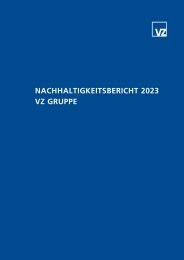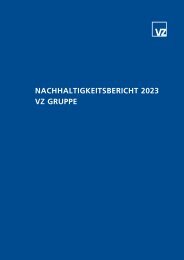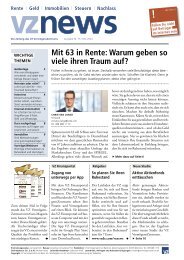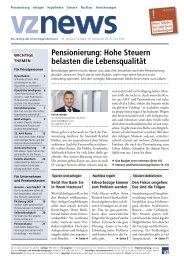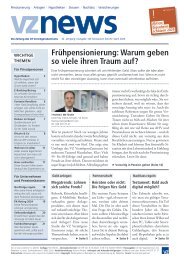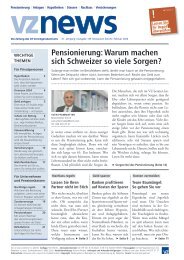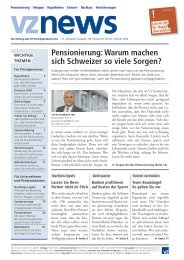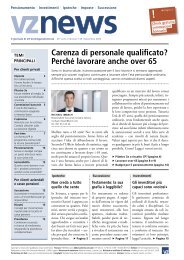lumin news Issue 10 / Winter 2024
Create successful ePaper yourself
Turn your PDF publications into a flip-book with our unique Google optimized e-Paper software.
<strong>lumin</strong> <strong>news</strong> <strong>10</strong> / winter <strong>2024</strong> Page 5<br />
How to generate retirement income with a<br />
minimal tax burden<br />
With the right planning, and careful use of allowances, a couple can significantly<br />
lighten their tax load in retirement.<br />
JOE FISHER<br />
Financial Planning Manager<br />
joe.fisher@<strong>lumin</strong>wealth.co.uk<br />
Phone 02039 887 788<br />
Most retirees are able to substantially<br />
reduce their income<br />
tax burden once they<br />
stop working. With careful<br />
management and disciplined<br />
use of allowances, a couple<br />
could be able to shield up to<br />
£44,000 from tax in the<br />
<strong>2024</strong>/25 tax year (see chart).<br />
A changing taxation<br />
picture in retirement<br />
During retirement the taxation<br />
picture undergoes a<br />
major shift for most people.<br />
Your income will drop significantly,<br />
so your tax bill will<br />
also fall. You can utilise several<br />
helpful allowances to<br />
stay within the basic rate tax<br />
band for income tax (20%),<br />
minimising your tax bill still<br />
further. In some cases, with<br />
careful planning, a retired<br />
couple could negate income<br />
tax entirely. It’s important to<br />
keep track of all forms of income.<br />
Pension withdrawals,<br />
rental income, State Pension<br />
payments and dividend income<br />
are all taxable.<br />
Making the most of<br />
tax allowances<br />
Pension withdrawals are subject<br />
to income tax at your<br />
A couple can have up to £44,000 income<br />
per year tax-free<br />
Max. tax-free income<br />
£45,000<br />
£40,000<br />
£35,000<br />
£30,000<br />
£25,000<br />
£20,000<br />
£15,000<br />
£<strong>10</strong>,000<br />
£5,000<br />
£0<br />
One person<br />
Personal allowance<br />
CGT allowance<br />
Starting rate for<br />
savings income<br />
marginal rate. But if a couple<br />
each apply their personal allowances<br />
of £12,570, over<br />
£25,000 can be taken taxfree<br />
each year. The capital<br />
gains tax annual allowance<br />
can be used to ‘harvest’ investment<br />
gains – or other<br />
taxable gains – in each tax<br />
year. This allowance is currently<br />
£6,000, but will be<br />
£3,000 per person for the<br />
<strong>2024</strong>/25 tax year.<br />
Individuals with less than<br />
£17,570 of non-savings income<br />
may be able to benefit<br />
from up to £5,000 of tax-free<br />
savings income. This allowance<br />
is known as the starting<br />
rate for savings. Every £1 of<br />
non-savings income above<br />
your personal allowance of<br />
£12,570 reduces your starting<br />
rate for savings by £1.<br />
Basic rate taxpayers who<br />
have income above £17,570<br />
can benefit from £1,000 taxfree<br />
savings interest per person<br />
each year, via the personal<br />
savings allowance.<br />
A couple<br />
Personal savings allowance<br />
Dividend allowance<br />
Cutting your dividends<br />
tax bill<br />
Investors who are earning<br />
income from dividends (on<br />
investments held outside of<br />
tax wrappers) can also take<br />
steps to reduce their tax bill.<br />
The dividend allowance of<br />
£1,000 will be cut to £500<br />
from 6 April, but a couple<br />
can still enjoy tax-free dividend<br />
income of £1,000 annually.<br />
Staying within the<br />
basic rate tax band also sees<br />
you pay tax on dividend income<br />
(above the dividend<br />
allowance) at a rate of just<br />
8.75%, rather than 33.75%<br />
and 39.35% for higher and<br />
additional rate taxpayers.<br />
ISAs and pensions<br />
ISAs and pensions form the<br />
bedrock of retirement income,<br />
but how and when<br />
should you draw on them?<br />
Many retirees make tax-free<br />
withdrawals from flexible<br />
ISAs first and save pensions<br />
for later in retirement (leaving<br />
them invested and with<br />
the opportunity for future<br />
growth), as pensions are typically<br />
exempt from forming<br />
part of the estate for inheritance<br />
tax purposes.<br />
Using ISA assets first enables<br />
you to continue Dividend making allowance<br />
pension contributions Personal of up savings allow<br />
to £60,000 in each Starting tax year. rate for savin<br />
This may be helpful if you<br />
CGT allowance<br />
are continuing to work parttime,<br />
as once you start Personal draw-allowancing<br />
from pensions you are<br />
limited to a maximum contribution<br />
of £<strong>10</strong>,000 in each<br />
tax year. You can take up to<br />
25% of your total pension<br />
pot as a tax-free cash lump<br />
sum when you start accessing<br />
pension benefits.<br />
Strategically spreading<br />
pension withdrawals (beyond<br />
the 25% tax-free lump<br />
sum) over a number of tax<br />
years can help ensure overall<br />
income stays within the basic<br />
rate tax band, rather than<br />
making a large one-off withdrawal<br />
in a given tax year,<br />
which would likely tip you<br />
into a higher tax bracket.<br />
A retired couple who<br />
are making full use of<br />
their annual allowances and<br />
exemptions can save thousands<br />
on tax each year. Learn<br />
more by calling one of the<br />
Lumin financial consultants<br />
on 03300 564 446.<br />
FACTSHEET<br />
Tax-saving tips<br />
for pensions<br />
Request this free factsheet<br />
via enclosed response card,<br />
info@<strong>lumin</strong>wealth.co.uk<br />
or call 03300 564 446



